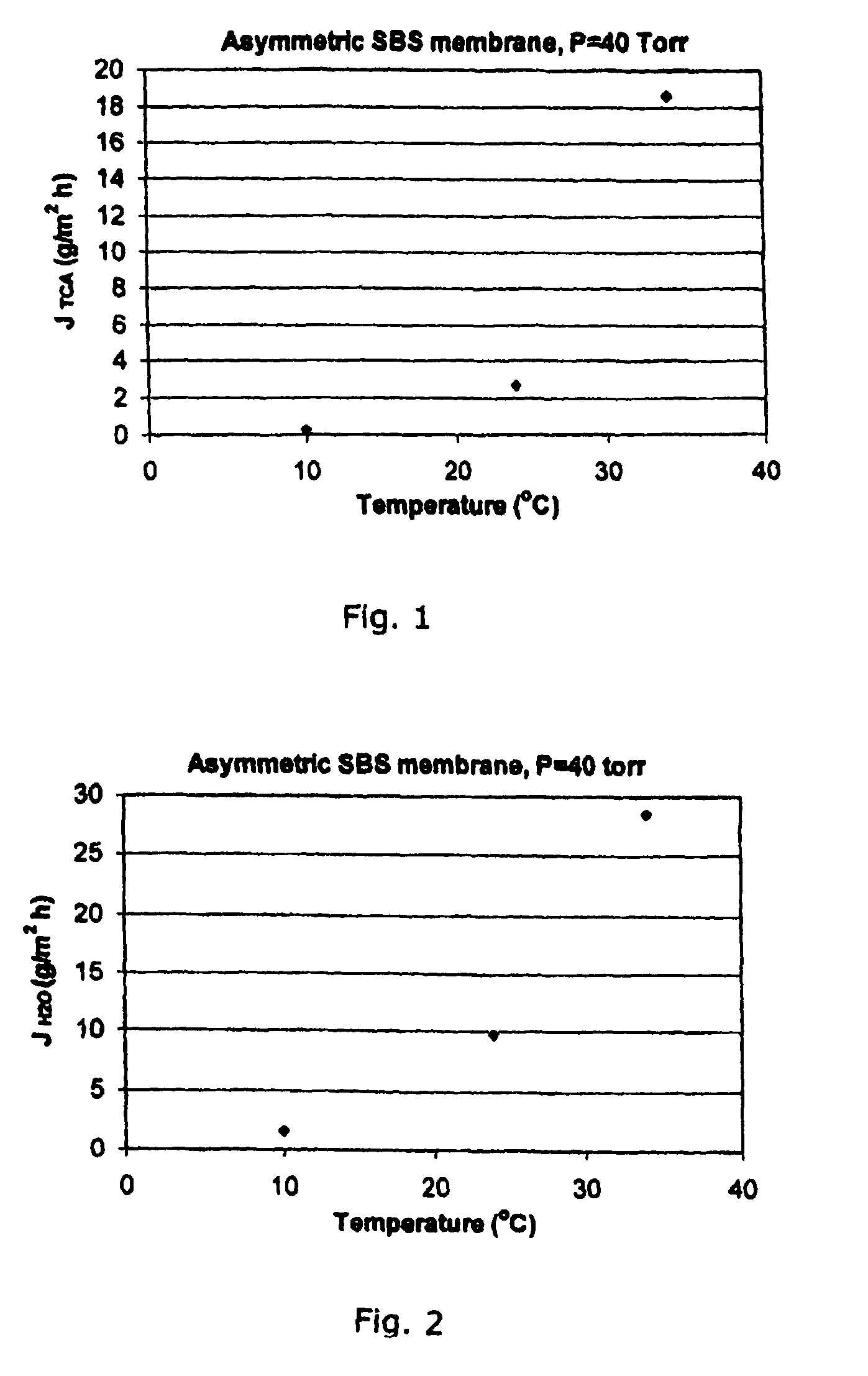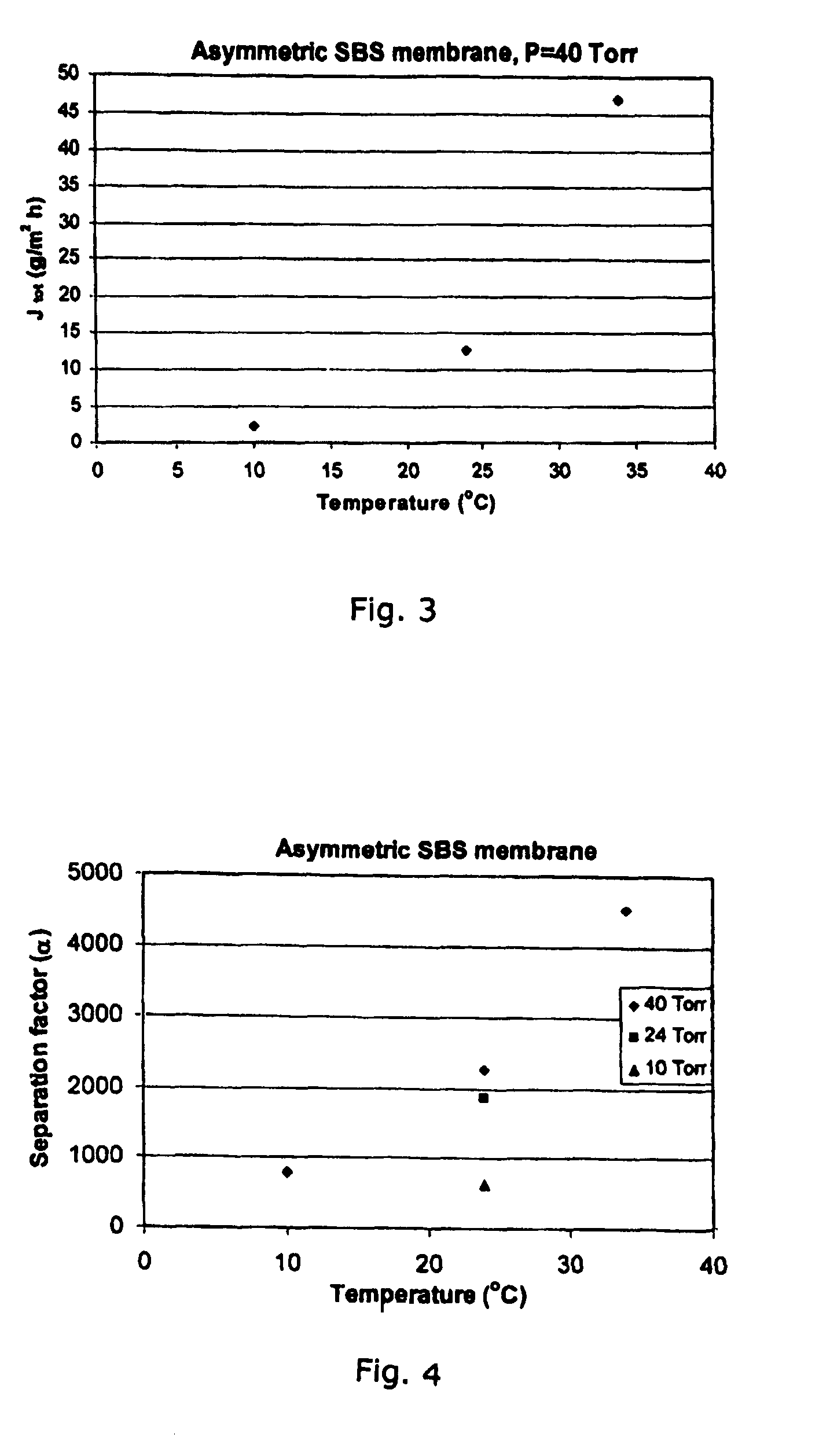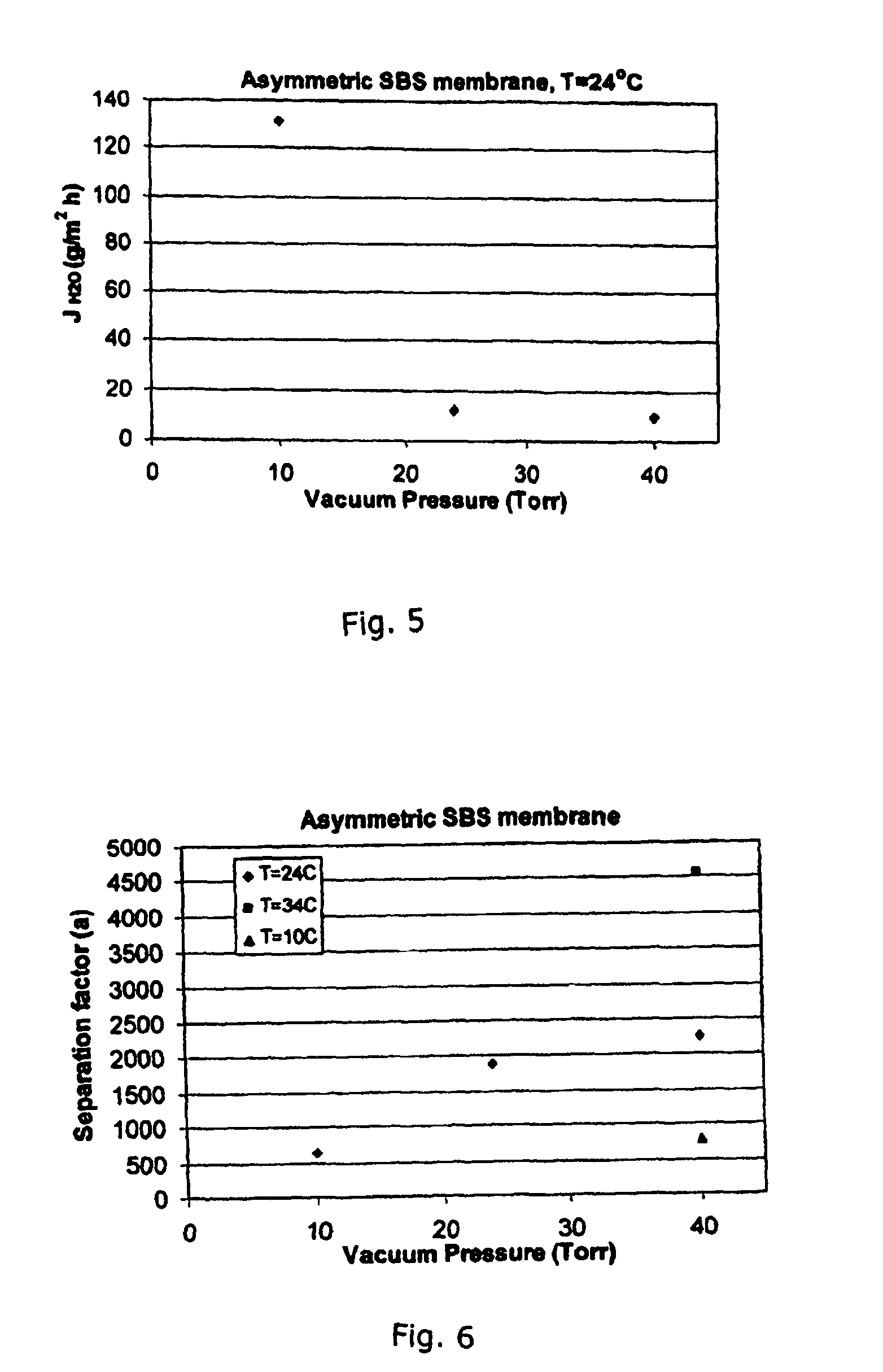Method for fabrication of elastomeric asymmetric membranes from hydrophobic polymers
a technology of asymmetric hydrophobic membrane and elastomeric polymer, which is applied in the direction of membranes, foundry moulding apparatus, separation processes, etc., can solve the problems of asymmetric, hydrophobic membrane, and no asymmetric hydrophobic membrane prepared from elastomeric polymers in the prior ar
- Summary
- Abstract
- Description
- Claims
- Application Information
AI Technical Summary
Benefits of technology
Problems solved by technology
Method used
Image
Examples
example 1
[0036]Regarding the morphology of a membrane prepared with 18 wt. % of polymer dissolved in 90 / 10 wt. % DMA / toluene mixture, cast at a thickness of 250 μm, and placed into a water bath for coagulation, the cross-section is about 60 μm in thickness and is almost completely dense in structure. The top surface of the membrane shows an essentially dense structure with the presence of some pores. This structure is similar to the one obtained with the same starting solvent solution but prepared by solvent evaporation. This result indicates that the presence of toluene, even at low concentration, influences the membrane preparation resulting in a dense structure. The membrane was both partly transparent and opaque.
example 2
[0037]Regarding the morphology of an asymmetric membrane prepared with 20 wt. % of polymer dissolved in THF, cast at a thickness of 788 μm, and placed into a water bath for coagulation. It was seen that this technique also results in the production of a membrane having an essentially dense structure. The membrane is completely opaque and is about 150 μm thick. This membrane is almost completely dense. The top surface has a very large number of pores that are visible at the membrane surface. The bottom surface appears smooth with a few pore openings, but has a dimpled appearance.
example 3
[0038]A 20 / 80% SBS in THF solution was cast at a thickness of 788 μm, and pure ethanol was used as the coagulation bath. This condition produced an asymmetric membrane with a very thin, dense top surface skin, ˜1 um in thickness, with a quite smooth surface having no noticeable pores.
PUM
| Property | Measurement | Unit |
|---|---|---|
| thicknesses | aaaaa | aaaaa |
| thicknesses | aaaaa | aaaaa |
| thicknesses | aaaaa | aaaaa |
Abstract
Description
Claims
Application Information
 Login to View More
Login to View More - R&D
- Intellectual Property
- Life Sciences
- Materials
- Tech Scout
- Unparalleled Data Quality
- Higher Quality Content
- 60% Fewer Hallucinations
Browse by: Latest US Patents, China's latest patents, Technical Efficacy Thesaurus, Application Domain, Technology Topic, Popular Technical Reports.
© 2025 PatSnap. All rights reserved.Legal|Privacy policy|Modern Slavery Act Transparency Statement|Sitemap|About US| Contact US: help@patsnap.com



